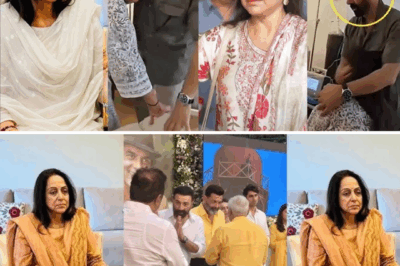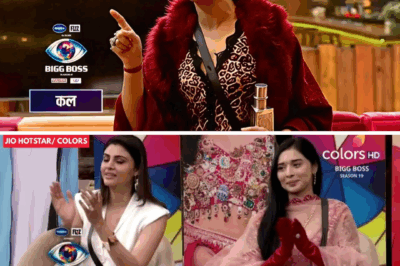It began with a Facebook post that no one could ignore.
The words leapt off the screen, dripping with shock value: an actor accused of committing the unthinkable — having a romantic and physical relationship with his own granddaughter, even making her pregnant. It was the kind of claim that makes you stop scrolling, your stomach turning at the thought.
The post described a horrifying backstory. According to the narrative, the actor’s son and daughter-in-law had tragically died, leaving him to raise his granddaughter alone. As the years passed and the girl grew into a young woman, the man supposedly became “enchanted” by her beauty. The text painted him as a predator whose morals had crumbled, culminating in an unspeakable betrayal of family and humanity.
The shock was instant. Comments poured in. Anger, disgust, disbelief — all flooded the thread. Some wrote, “This is beyond disgusting.” Others called for his arrest. There were even threats and curses hurled into the comment section.
The photos attached to the post showed an older man and a young woman posing together, sometimes in romantic poses, other times smiling as if captured in a candid moment. To an unsuspecting viewer, the images could easily fit the sinister narrative.
By the time the dust settled that first day, the post had already racked up over 14,000 likes, 4,500 comments, and hundreds of shares. The outrage machine of the internet was in full motion.
But behind the viral anger lay something else entirely — the truth.
The man in those images was not some shadowy figure hiding in shame. His name is Rahul Jagatap, a well-known professional model, actor, and social media influencer. Far from being an obscure recluse, Rahul commands a massive audience with over 1.7 million followers on Instagram.
The young woman? Not his granddaughter at all. She is Kavya, also a model and content creator, known for her vibrant energy and polished camera presence. Together, they have collaborated on multiple Instagram Reels — short, romantic skits designed purely for entertainment, much like thousands of other creators do every day.
The so-called “evidence” used in the Facebook post was nothing more than these collaborative videos, repurposed and twisted into something grotesque. In reality, Rahul and Kavya share no familial relationship. They are professional collaborators, nothing more.
But the internet rarely stops to verify. In the hunger for sensational stories, a photo and a few suggestive lines of text were enough to set off a chain reaction.
Rahul’s followers were stunned. Many rushed to defend him, posting his past work, screenshots of his collaborations with various models, and even messages from fans expressing support. But by then, the damage was done — the story had spread far beyond his own audience.
For Rahul, the attack was not just a personal insult. It was a direct hit to his reputation, the kind of scandal that can stick to a public figure long after it has been disproven. In an industry where image is everything, even a baseless rumor can cost deals, partnerships, and trust.
Kavya, too, faced the sting of unwanted attention. For a young woman building her career in modeling and content creation, being linked to such a narrative is not just humiliating — it’s dangerous. Online harassment began flooding her accounts, with strangers accusing her of immorality or demanding she “confess” to things that never happened.
This is the darker side of social media fame: the reality that a single viral post can warp the perception of millions within hours. It doesn’t matter that there’s no truth behind it — the visual pairing of images and scandalous text creates a false memory in the minds of viewers.
Experts in digital misinformation note that such posts often thrive because they combine visual plausibility with emotional shock. The human brain reacts more strongly to outrage than to facts, and so, by the time corrections appear, the lie has already traveled farther than the truth ever will.
The Facebook user who originally posted the claim identified the man as “Musharraf Khan from Haryana” — a name entirely unrelated to Rahul Jagatap. This misidentification wasn’t just sloppy; it was malicious. It dragged a real person into a fabricated crime with devastating personal consequences.
When journalists began investigating, it became clear: there was no evidence of any familial connection between Rahul and Kavya, no criminal accusations filed, no police investigation — nothing but the echo of a viral rumor.
Rahul’s content, viewed in its original context, was exactly what it appeared to be: scripted, romantic skits meant for entertainment. Close-up shots, hand-holding, and playful smiles — all part of the act. In a different light, they might inspire comments like “cute couple” or “great acting.” But stripped of context and placed alongside a fabricated backstory, the same visuals were transformed into supposed proof of a moral crime.
It raises an unsettling question: how many other people have had their images hijacked in the same way?
For creators like Rahul and Kavya, the incident is a sobering reminder that fame comes with vulnerability. While their growing platforms give them reach and influence, they also make them targets for those looking to exploit their visibility for clicks, engagement, or malicious pleasure.
The scandal also exposes a gap in how quickly platforms respond to viral misinformation. By the time fact-checkers or official statements emerge, the original post has often been copied, reposted, and re-shared across dozens of pages. Deleting one link doesn’t erase the story from public consciousness.
Still, the truth matters — and in this case, it eventually surfaced, thanks to determined fact-checkers and supportive followers who refused to let the lie stand unchallenged.
Rahul has continued posting his content, refusing to let the scandal silence him. Kavya, too, remains active, though both have taken a more cautious approach to what they share publicly.
In the end, the story is not about a sordid family secret. It is about the fragility of truth in the digital age, where a lie can take root and spread before anyone has the chance to blink.
It’s about the responsibility of those who consume content to pause before sharing, to question the narratives presented to them, and to remember that behind every profile picture is a human being whose life can be upended by a single post.
And perhaps most importantly, it is about refusing to let falsehoods define someone’s reality — especially when that someone is guilty of nothing more than creating art for an audience they love.
News
Hema Ji Breaks Silence After Dharmendra’s Passing: Social Media Reacts to Emotional Posts
The world paused for a moment when the news of Dharmendra’s passing spread. Bollywood’s “He-Man,” a figure larger than life,…
Hema Malini Health Rumors Rise After Dharmendra’s Hospital Scare: What’s Really Happening?
The first whispers came quietly, almost like a shadow sliding across the walls of social media. Hema Malini, the timeless…
A Quiet Ritual, A Shattered Heart: What Really Stopped Hema Malini at Dharmendra’s Side?
Hema Malini had lived a life in the public eye for more than five decades, but nothing prepared her for…
Bigg Boss 19 Episode 100: Tanya Sparks Intense Fight With Gaurav
Bigg Boss 19 Episode 100, airing on 1st December 2025, marked a milestone not only because it was the 100th…
Bigg Boss 19 Promo 1st December 2025: Contestants Face Media Questions Live
Bigg Boss 19 reached a new milestone with Episode 100, airing on 1st December 2025, and fans were treated to…
Bigg Boss 19 Drama: Amaal Malik Cries After Shehbaz Badesha Evicted
The Bigg Boss 19 house was filled with tension and anticipation as Shehbaz Badesha’s eviction was announced. While many contestants…
End of content
No more pages to load












